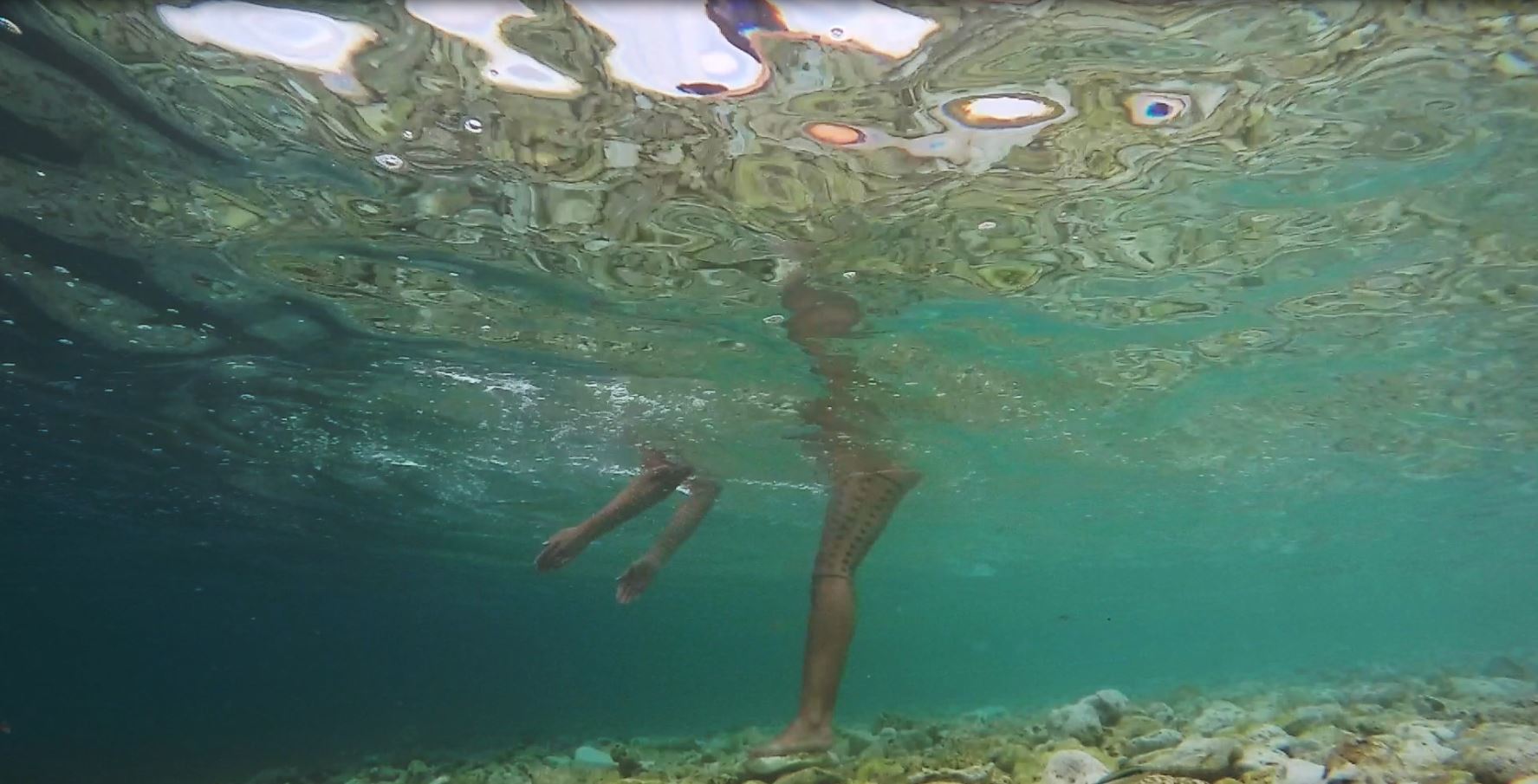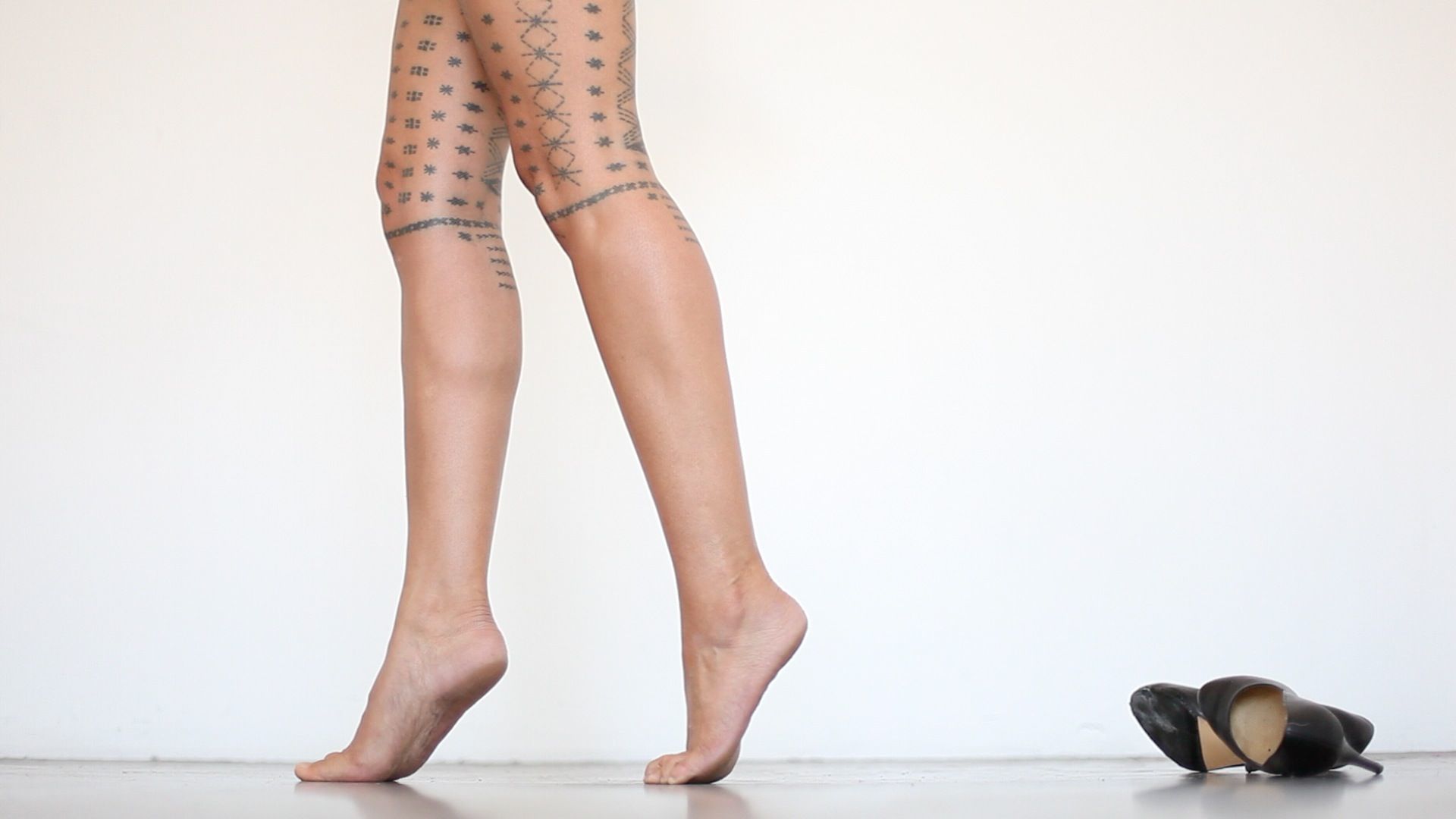Angela Tiatia had wanted to be an artist since she was five-years-old. But her mother, who emigrated from Samoa to New Zealand in the 1960s to work in factories, was weary of her passing on the chance to go to university. For her, an artist’s life would be one without money or security, a digression from the upward momentum she had worked so hard to set in motion. This conversation around class, status, money and the way society labels people would come to influence much of Angela’s work.
She didn’t go to uni after school, but she didn’t pursue art straight away either. In her teens she fell into modelling. Her 20 years in the industry would introduce her to the complex world of static beauty ideals that would form another key area of creative interest. Today, her work weaves her experiences of being raised in Samoan culture and the fashion industry. But rather than being controlled by them, she uses them to inform her sophisticated examination of the lives of women through paint, sculpture, video installation and performance art. For the record, she did make it to uni, eventually earning two degrees.
Your work explores gender, colonialism and class structures — issues that you became aware of through your time as a model. Was there a certain point where it started to become visible to you?
It was visible from the very start. I’d come from a deeply religious, Mormon family so the modelling work’s sexual and sensual images were very foreign to me. The sense of control that was over my body as a Christian woman was completely different too: I was told how to cover up and what to eat.
On the flip side to that you’d think there was a lot of freedom in the fashion industry, but I was under immense control. Again I was told what to wear, what to eat and how my body was to look.
So the two different worlds showed you the same reality.
Yes, I came to realise that as a woman in modern culture I wasn’t given a lot of control over my body. In a sense my work touches on that and I use art as a way of regaining the control over my body that was lost for so long.
Are you still religious?
Absolutely not! That was one of the things I got rid of when I started modelling. I always had a questioning mind, I would sit in Sunday school and ask, “What about the dinosaurs? There are all these fossils being found, how do you answer that?” Curiosity is a really great thing to have in your toolbox as an artist.

Alongside gender, your work is interested in colonialism. I wanted to chat a bit about that; speaking to other Kiwi artists you get the feeling decolonisation is this really vivid topic in New Zealand public life.
It’s not specific to New Zealand. On social media, this idea of a decolonising art practice is something that’s popped up a lot in the last couple of months. It’s certainly here in Australia. I heard a beautiful radio interview with Tony Briggs where he talked about what decolonizing means. He said, “Just imagine you’re in a room that’s covered with years and years of wallpaper, so the layers are quite thick.” For him, decolonizing writing and art is about slowly peeling back the layers of this wallpaper to reveal what was originally underneath.
What does that image mean to you?
Perhaps we will never get a full view of what was underneath this wallpaper, but the conversation about what’s underneath will come to the fore. That’s a really beautiful way of looking at decolonizing art. It’s something we can all work towards as Australians. We can support the unraveling and revealing of what was underneath “the layers of wallpaper” for our Aboriginal and Torres Strait Islanders brothers and sisters.
When you’re making a statement through your work, trying to evoke change, how do you make sure you’re not just speaking to your audience — people who probably already hold these views?
I go by gut instinct and make works that are immediate and urgent for me; I know if I’m true to myself and the work there will be an audience that understands. But there will also, inevitably, be a new audience that will come across my work who I agitate. A good example of this is Walking the Wall: The feedback was interesting because a new audience within the Samoan community were quite alarmed and angry because I broke this taboo within the culture and revealed my Malu, a sacred tattoo.

Looking forward, what is on your mind right now.
I’m interested in the notion of the other. In the art world, the centre is the white, straight male. I’m interested in how the audience views the other, and how this kind of labelling affects the way work is made and how the artist is viewed.
Can you give us an example?
Within this paradigm the artist becomes typecast, which is quite a challenge for me because there are a lot of labels attached to my art. I’m seen as a “Pacific Islander female artist”. But why am I given this label? Why can’t I just be an artist? Why is that not available to me as a woman of colour? A straight white male is afforded the label of artist, he’s not called a “straight white male artist”.
It’s present in our language as well — this idea of otherness being something foreign or something negative. Even looking at how when a male is called a pussy or cunt it’s negative because they’re feminised labels.
How do you begin to address something that’s become so insidious?
It won’t happen within my generation. I have a 14-year-old son, so it’s interesting being a feminist artist and raising a young man. I talk to him a lot about feminist issues and feminist works and the language, I’m raising him to be aware of his masculinity — that it’s a powerful thing to be sensitive. I think slowly within his generation, and maybe his children’s, that we might see the real benefits of the changes that are occurring.
Credits
Text Wendy Syfret
